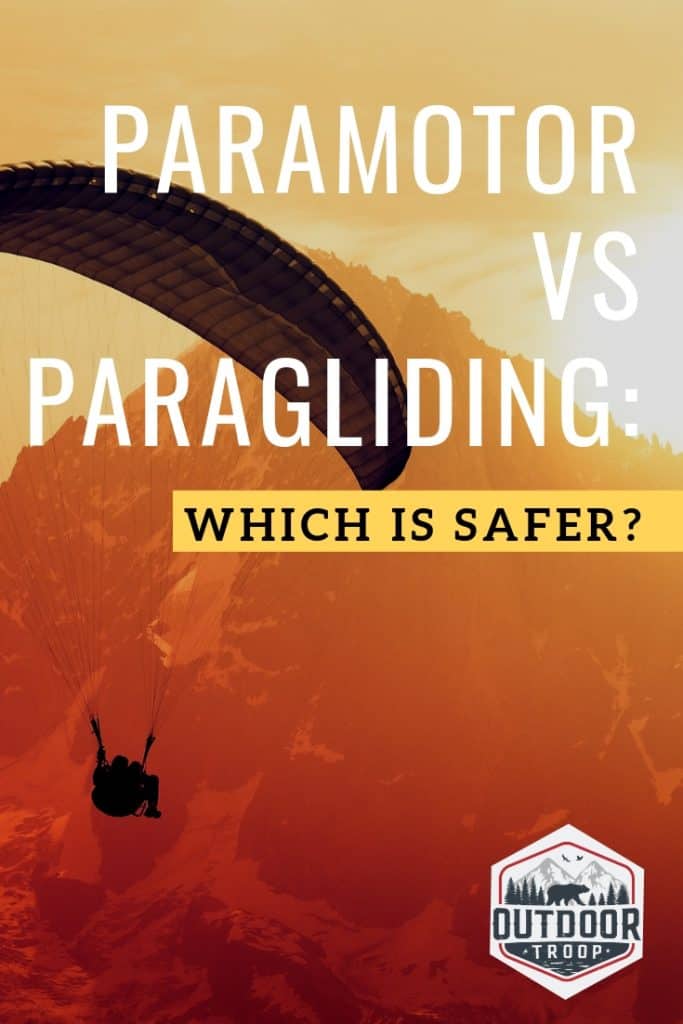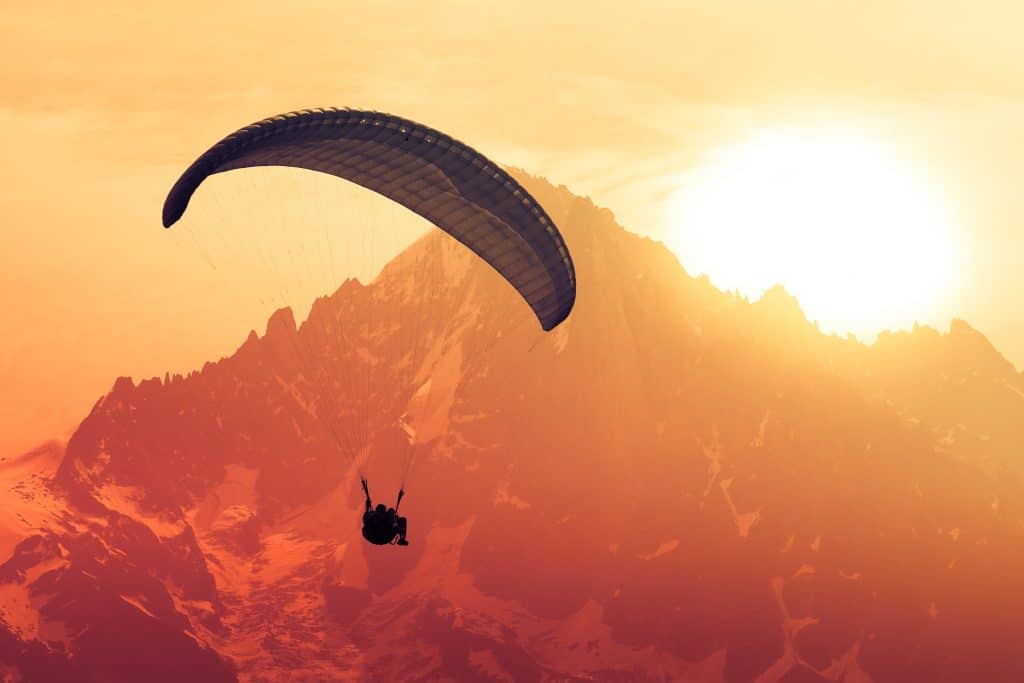
So, are you a little apprehensive about taking on flying? Good! Fear is what keeps us safe. While paramotoring or paragliding, the attitude and preparation of the pilot can make all the difference when it comes to safety.
So which is safer, paramotors or paragliding? Both Paramotoring and Paragliding are sports that statistically have about the same fatality rate as driving a regular car on a highway. Paramotorists can experience more non-life-threatening injuries due to the propeller, but the statistics do say that they are about the same in terms of deaths.
Paramotors just have a propeller on the back to help you get more lift whenever you would like. When it comes to safety this propeller you have back there can be a help but it can also be a problem. Today we will take a look at the biggest causes of accidents with paramotors and paragliders, compare the different safety issues, and talk about what you can do about them.
Crashes and Crash Landings
Both paramotors and paragliders can be flown safely, but safety is completely up to the pilot. Most injuries come from pilot error.
Remember through all of this that it is most important to never get complacent. Most accidents in these sports come from people getting distracted, too comfortable in not following all procedures, or in trying to show off.
Crashes are one of the biggest problems with paramotors and paragliders. While you are flying one of these, you are usually moving in the 20 to 30 mph range.
This is enough speed to kill you or cause a serious injury if you hit the ground or another structure. There are radio towers, trees, power lines, and anything else you can imagine that would be close to the ground.
Power Lines
Power lines are also especially dangerous because of their high voltage. Big, high-tension power lines don’t run at the same 120 volts that the electricity from your wall does. No, these lines are powered at the hundreds of kilovolts.
At that voltage, the lines from the wing to your harness can conduct the electricity from the lines and electrocute you.
Crash Landings
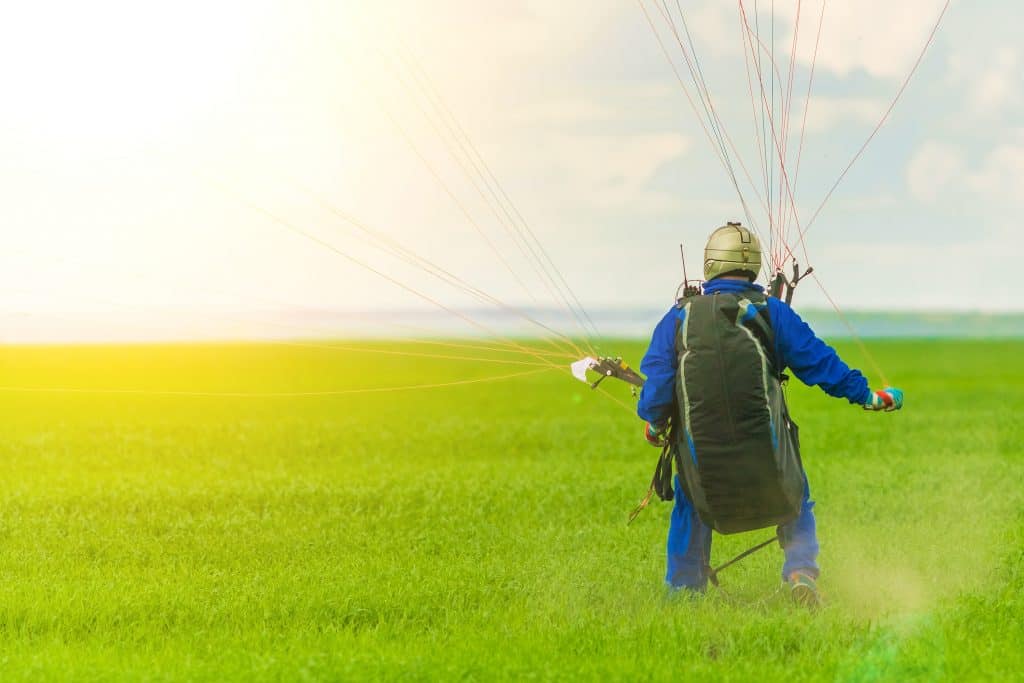
While paragliders and paramotors usually don’t run faster than 30 or 40 mph, they definitely could if you were to enter some kind of spiral. This can come if your wing collapses. If you were to fall at this higher speed, the results would be even worse.
In another type of crash, the pilot doesn’t lose their lift, but they are coming down on terrain that is not good for landing.
Types of terrain that are especially dangerous for these types of aircraft include lakes, oceans, rivers, forests, and mountainsides.
These are all horrible places to land a paraglider or paramotor. When a pilot is coming up on a hazard like this, they usually haven’t had a wing collapse, and they still have their lift. They are just coming down because they are losing their lift slowly. But they need to get out fast.
As you can imagine, most of these accidents result from flying too close to the ground. Flying close to the ground is what puts these objects in your path. It also means you have less time to recover from a wing collapse.
So to be safe, what a smart pilot would do is never fly close to the ground. They would just completely avoid it, and would always give themselves extra space to react to things like a wing collapse or a loss of lift that brings them down onto an area that is not suitable for landing.
Since paramotors do have an actual motor, they may have a small advantage when it comes to getting out a sticky situation like this. They can just fly up higher into the air.
On the other hand, if a paraglider finds itself coming down to the ground too fast, or about to collide with a structure, or coming down onto a forest, or lake, or any other dangerous place to land, they won’t be able to generate more lift unless the wind happens to be in their favor.
They can’t just pull more lift out of nowhere as a paramotor can.
But the Propeller!
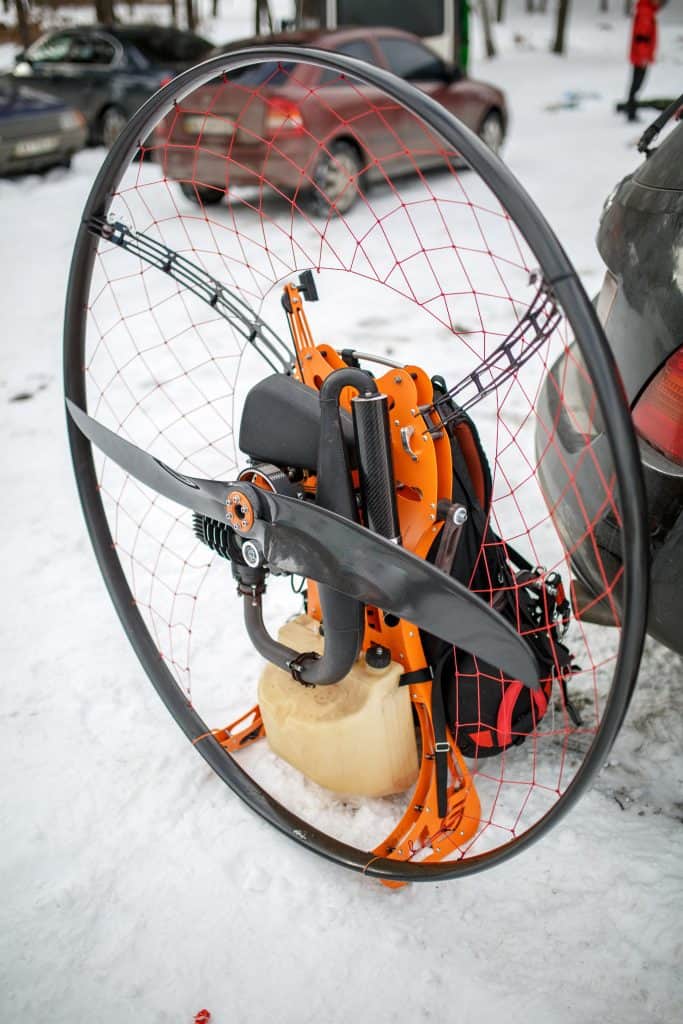
This propeller that paramotors have can be a cause of more injuries, though. Propellers can cut off fingers or hands, break bones, catch your hair or clothing and suck you in, and pretty much anything else you can imagine. They are to be respected and not treated lightly.
While propellers don’t cause as many deaths as the crashes do, they do cause life-changing injuries. These are some ways that you can keep yourself safe while flying with a propeller:
- Don’t have long hair. If you do, be sure it is tucked away somewhere safe so that there is no chance of it being caught by the propeller.
- Don’t wear long clothes, like scarfs. There are better ways to keep yourself warm on cold days. Don’t wear things that dangle. Wear a cap instead of a scarf. If your coat has a scruncher, take it out.
- Don’t start the motor unless it is on your back, ready to go. What sometimes happens to pilots is that the engine’s throttle gets stuck open. Then, if they start the engine, it roars to life at full rpm’s. The motor can move significantly and flop over if this happens, landing on the pilot or on someone else, and cutting or injuring them.
- Don’t start the motor without making sure no one is around you. After looking around to be sure, you should also yell something to let people know you are starting your motor. “Clear Prop” is a common thing people yell.
- Wear a helmet. Although the paramotor gear isn’t the heaviest stuff in the world, it really can make a difference if you trip or fall. It is enough to bring you down quickly and in an uncontrolled way. You don’t want to fall on your head, at least not without protection, so wear a helmet.
Also, know that a paramotor doesn’t need a propeller to stay aloft in the air. As already mentioned, paragliders and paramotors are basically the same thing.
A paramotor just has an engine and propeller strapped to their back. If anything happens to the motor, the pilot can just float and come to a safe place to land like a normal paraglider pilot would do.
Things You Can Do to Increase Safety
Like I mentioned in the beginning, most of the unsafe flights come from pilot error. This means that you need some good strategies to outsmart your own worst enemy: you.
Most people do not like to admit when they are wrong, and it is human nature to try and shift the blame for an accident or a near miss to someone else, or to the weather, or to their equipment. The truth is my friend, that all of this blame-shifting does not make our sport any safer.
You are responsible for knowing the weather. You are responsible for inspecting your equipment and getting it checked by a professional. You are 100% responsible for the operation of your own aircraft. I mean, if you aren’t, then who is?
In general, never be too irritated, hungry, or in a hurry when flying. Take your time, be relaxed, and follow a routine. With a good routine to follow, you will make fewer errors and it will be harder to forget the small important things.
Also, keep in mind that these are some quick suggestions. You should think critically about your flights and evaluate what needs to be done to make them safer.
Get Training
Yes, it’s expensive, but yes you want to be doing this right. Get some proper and qualified training to start off your flying career. You won’t regret it.
Equipment Inspections
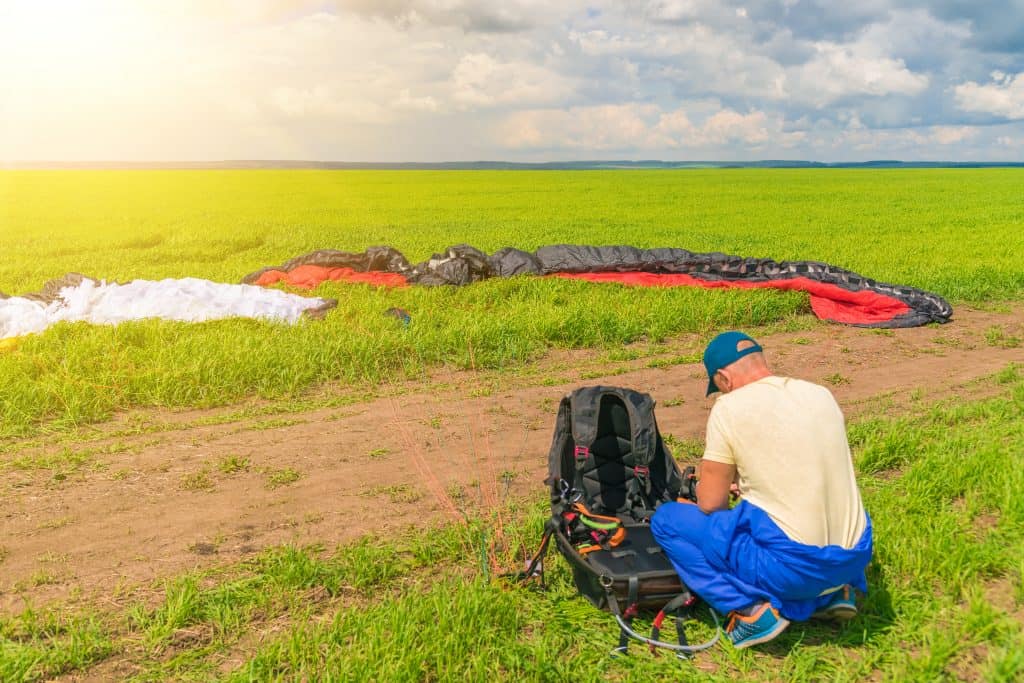
It is a good idea to visually inspect your equipment before each flight. Normal use will eventually wear down the different parts of your equipment.
UV rays especially will wear down the wing and any fabric. Therefore, flying at noon will wear out a wing faster than flying in the morning or in the evening.
What you are looking for in this inspection is any fraying or signs of wear and tear. You will want to inspect the harness, straps, wing, propeller, lines, and pretty much everything. Make sure everything looks and feels right, tight, and solid.
In addition to doing a visual check before each flight, you should get your wing professionally inspected every year or after every 100 hours of flight time, whichever comes sooner. Also, if your wing is not performing as it used to, that is also a sign that it is definitely time to get it inspected.
In this check, they will be able to tell exactly how much the fabric of your wing has broken down due to UV rays. They will be able to tell you if the wing needs repairs or if it is safe to keep using.
Don’t Fly Close to the Ground
Most problems that pilots encounter come from flying close to the ground. There are power lines, radio towers, trees, fences, and hills that can come up very quickly. If it must be done, flying this close to the ground requires extra attention to your surroundings.
Even with the most attentive pilot, some things just can’t be seen, and many pilots have hit structures or power lines out of the blue. This is one reason that you should never fly close to the ground if at all possible.
The other main reason is that flying higher in the air gives you more time to respond in a crisis. If you are doing everything right, like getting your wing inspected, not flying in too much wind, flying in good conditions, etc., then normally you will not have any problems.
However, there are some freak accidents that do happen to pilots who are doing everything right.
In these cases, that extra time to react is very precious. Most modern wings will correct themselves with enough time. If things start to look dire and it appears that that is not working out, you will also then have time to deploy your backup chute.
Having more altitude and therefore more time to react is invaluable in a situation like this! If you are only a few hundred feet off the ground, then your time to deploy a chute or fix your wing is very, very limited.
Avoid Distraction
This is one of the main, if not the main, cause of problems for pilots. When you are flying it is so easy to just take in the view that you can become distracted and not notice that power line, or hill, or other person flying near you.
One main cause of distraction is cameras and grabbing footage of your flights. There is nothing inherently wrong with this, but don’t let it take your attention.
You should probably just set it and forget it, and enjoy the footage later. Don’t worry too much about adjusting your cameras or phone.
Don’t Try And Show Off
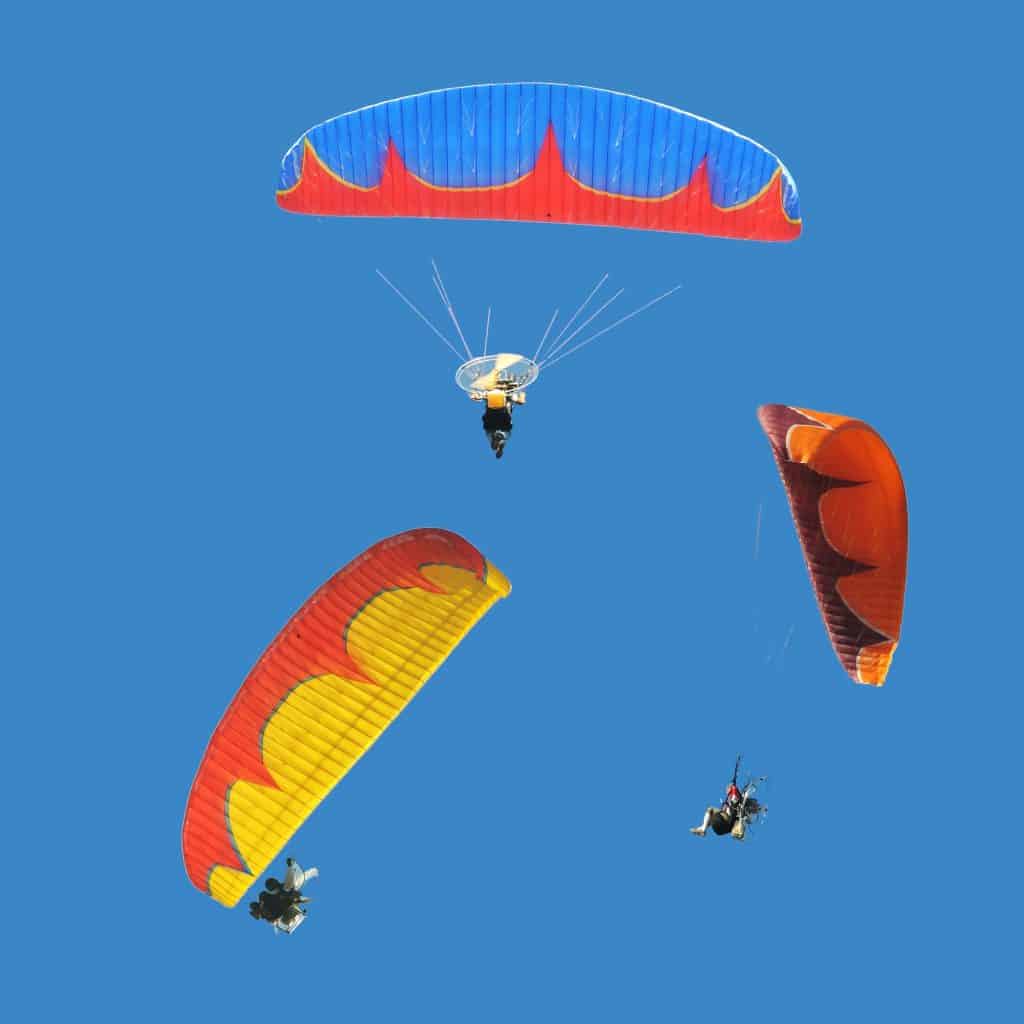
Distraction is especially strong if you are trying to show off. If your family is coming to see you for the first time, if other pilots are doing cool tricks, or if you are starting to get bored with what you have achieved so far, you are possibly in a position of distraction and increased risk-taking.
Keep in mind also that there is a real risk of blacking out while trying to turn too sharp or do some kind of trick. If you black out, you may not come back before hitting the ground.
Because of this risk, it is usually better to just not try any sort of maneuvers that will put a lot of G force on your body. You might wake up surprised at how easy it was to black out. Or, you might wake up dead.
Know the Weather
You should always check the weather and respect the weather limits of your equipment. Our gliders are not made to withstand high wind. Definitely, don’t fly just because “everyone else is doing it.”
Every time you fly you will have to make a judgment, and don’t let anyone else’s lack of preparation or lack of judgment change the judgment you have made based on solid experience, preparation, and checking the winds and weather.
Know How the Weather Works
You should have gotten some basic understanding of meteorology in your training, but it wouldn’t hurt to get a deeper understanding, would it?
It is always a good idea to continue to teach yourself. This keeps you humble, keeps your mind sharp and safety focused, and actually makes you a more capable pilot.
Especially in the mountains, the weather works differently. If you are flying near mountains, it is never a bad idea to learn more about mountain meteorology and the microclimates that can exist up there.
Flying is as Safe as You Make it
Like I mentioned in the beginning, paramotoring and paragliding are both about as safe as driving a car. This means that there is some risk in flying, but there is much that you can do to minimize that risk.
Always be vigilant. Always try one extra thing to increase your safety every time you fly. This will keep you from becoming more complacent over time and letting things slip one by one. Thanks for reading and have fun being safe in the sky!
Related Questions:
Are paragliders/paramotors safer than skydiving? While they are hard to measure, skydiving is considered safer because it is more regulated and perceived as more extreme, and therefore people can tend to be more cautious about following the procedures correctly.
How much does paramotor or paraglider training cost? Paramotor or paraglider training is usually offered in the one to two thousand dollar range for the full training. The price varies based on location and on instruction quality, one on one lessons will be more expensive than if you are in a class of two or three people.

